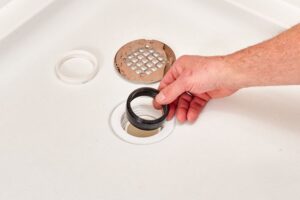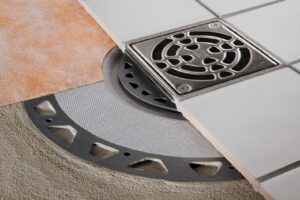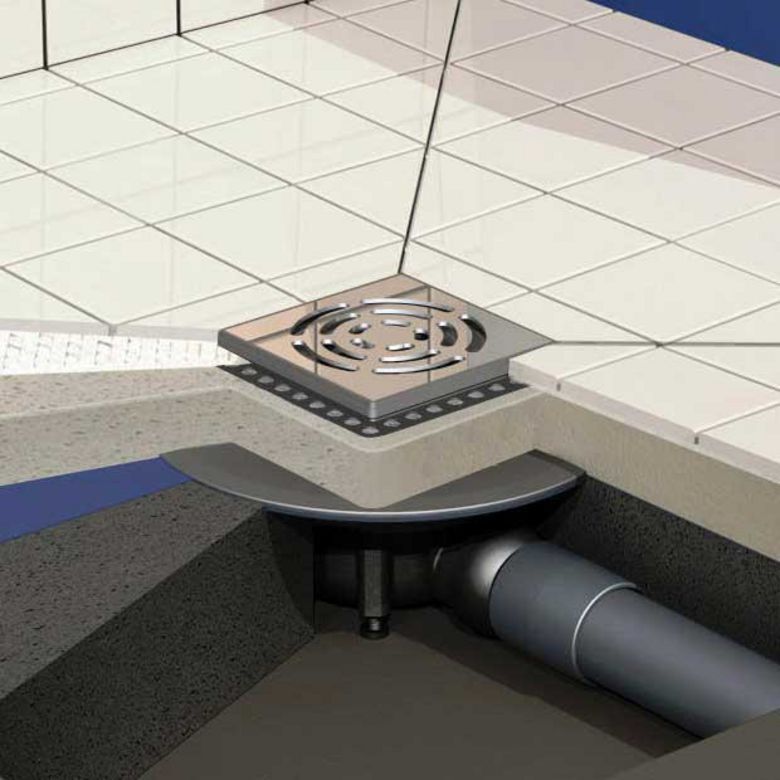
Whether you’ve moved into a new home or just had your bathroom reconstructed or renovated, installing a shower drain will probably be the last thing on your mind. Because we tend to focus more on the decor part of our homes, these little essentials are often ignored.
But if you want a flood free bathroom, you will need to learn how to install a shower drain as quickly as possible or have an expert do it for you. It is not that hard of a process if you have some skill and the right tools.
Prepare Your Tools
Table of Contents
First thing you need to do is to decide the kind of shower drain you want to use. There are different designs available in the market, from the basic pan to modern linear ones. Your choice depends on your bathroom type and the amount of cash you are willing to spend.
Also keep aside a hammer, screwing tools, adhesive, cement and any other essentials that will be needed for installation. Just remember, that most shower drains are compatible with a 2-inch pipe as it helps to drain out water faster.
Don’t Miss to Read: How to Clear a Clogged Shower Drain

Pick a Location
You can choose to install the drain right under the shower or somewhere close where water can reach quickly. Make sure the floor is leveled and free from dirt and grime.
Clean the area if required and cover the surrounding with a cloth while installing the drain. On top of that, make sure there’s enough slope available for the water to flow smoothly.

Compression Style Shower Drain
These are rather easy to install and require minimum effort. You will need a shower base which comes in materials such as fiberglass, steel or plastic to attach with the drain.
Place the base on your desired location and mark for cutting. Then glue the flange of the drain and before inserting it into the drain hole, place a friction ring and washer to adjust the drain. Screw in nuts and tighten them to secure the drain in place. Remove any excess glue or silicon and let it dry completely before you can use the shower.

Glue-on Shower Drain
This type is available in PVC and ABS material and does not require any nuts or screws. But indeed it is not as easy to install. You will need to match the plastic of the shower drain correctly, if you choose to go with the material, with the plastic in the drainage system.
Also, ensure the pipe measurement and height is correct before inserting the drain in place.
When you’re sure of all the measurements, glue the flange of the drain and place it on the base pan right on top of the friction paper and washer. Make sure to use the appropriate glue type. For black plastic use ABS glue and for white plastic use PVC glue.
Tiled Shower Drains
These are one of the most commonly used shower drains in homes as well as commercial buildings such as hotels and malls. Preparations for this kind of fitting are to be done when the site is being built.
This not merely saves time but also the hassle of breaking a few tiles to create a hole for the drain. This shower drains consist of three main components, the bottom flange, a middle flange and a strainer fitting.
When the tile is drilled in accordance with the drain pan, glue the bottom flange onto the drain pipe. After this, glue the liner on the floor and flange and remove the excess.

Now place the middle flange making sure it stands on top of the liner and using bolts screw it to fix with the bottom flange. Place the strainer and make sure there are a one and a half inch gap between the strainer and liner.
Conclusion
Although installing a shower drain is no rocket science, with a bit of guidance and the proper tools, anyone can do it in sufficient time.
Just keep in mind to choose and use the necessary tools and compatibility of the material. Once everything is tightened and in place, you won’t have to worry about any drainage issues for a long time.
